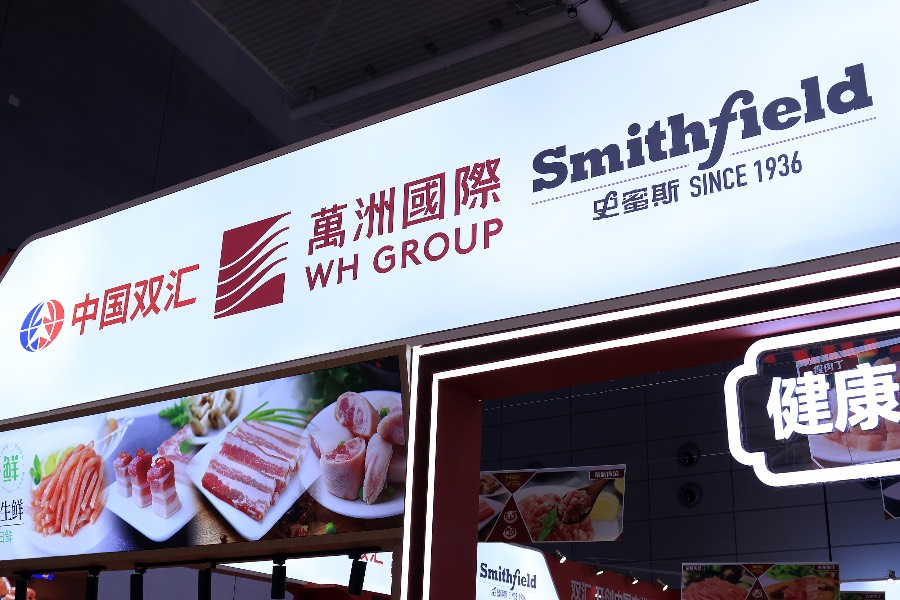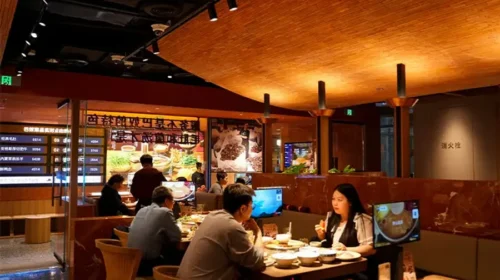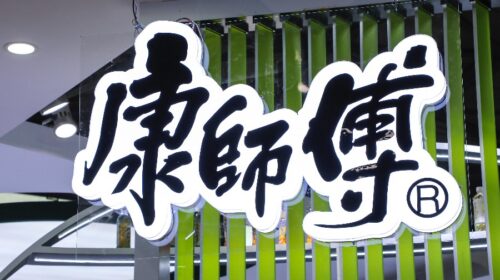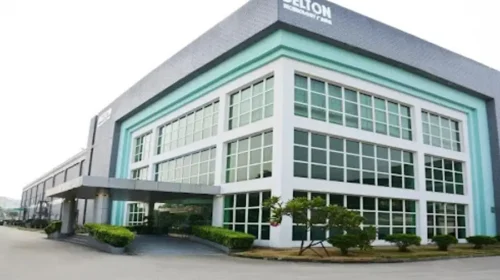WH Group flies on turnaround for North American pork business

The company turned a profit in the first half of the year by bringing down costs for its Smithfield business, amid diverging dynamics in the U.S. and Chinese pork markets
Key Takeaways:
- WH Group’s pork business earned an operating profit of $255 million in the first half of this year, up 168.4% year-on-year
- The company’s stock rose to a record high after the release of its midyear financial report, taking its market cap above HK$100 billion
By Lee Shih Ta
Its latest financial report tells a “tale of two pork markets,” one in China, the world’s largest pork consumer, and the other in the U.S., a distant second. Linking this pair of markets with diverging dynamics is WH Group Ltd. (0288.HK), a leading Chinese meat producer, which is also a major U.S. player through its ownership of local leader Smithfield (SFD.US).
Whereas Smithfield was once a drag on WH Group, the opposite was true in the Chinese company’s latest financial resultsfollowing a major overhaul of its U.S. operation.
Those results showed WH Group’s revenue rose 8.9% year-on-year in the first half of 2025 to $13.4 billion, as its operating profit rose 10.4% to $1.26 billion and its net profit, excluding changes in the value of its biological assets, rose 0.5% to $788 million. The healthy results inspired the company to recommend an interim dividend of HK$0.20 per share, double last year’s amount.
WH Group logged $62 million in net gains from adjustments to the fair value of its biological assets in the latest period, down from $96 million during the same period last year. That shows the latest profit increase owed more to meaningful improvements in the company’s main pork-producing operations and wasn’t just the result of paper gains.
A closer look at the report suggests the company’s core pork business was its main growth driver in the latest results. That business delivered $5.62 billion in revenue in the first half of the year, up 14.1% year-on-year, and generated an operating profit of $255 million, up by a whopping 168.4%. Meanwhile, revenue from its packaged meats business rose 2.3% to $6.64 billion, as that division’s operating profit dropped 7.9% to $1.05 billion.
The big news was a major turnaround in North America, where revenue from WH Group’s pork business jumped 21% year-on-year to $3.28 billion in the first half of the year. Equally significant, it swung to an operating profit of $163 million from an operating loss of $4 million a year earlier. By comparison, revenue from the company’s pork business in China grew by a slower 8.4% to $1.8 billion with an operating profit of $28 million, similar to a year earlier.
The pictures were quite different in the U.S. and China in terms of pricing trends. Hogs in China sold for an average of 15.5 yuan/kg, down 3.1% year-on-year. But prices in the U.S. increased 8.7% year-on-year to an average of $1.50/kg, according to data from the Chicago Commodities Exchange. And average hog prices reported by the U.S. Department of Agriculture also rose 4.5% year-on-year to $2.17/kg.
The North American gains owed to structural adjustments in local supply chains. When hog prices rise faster than pork prices or when pork exports suffer as a result of tariffs and other trade barriers, profit margins of slaughterhouses get squeezed. But lower feed costs that sometimes follow allow business to quickly become profitable again when pork prices begin to rise faster than hog prices.
Lower risks in asset-light model
WH Group has lately been raising pigs in partnerships with two U.S. peers, Murphy Farms and VisionAg Hog Production. Under their arrangement, the two U.S. companies now raise the pigs, while WH Group mainly provides feedstock and transportation services. Such an asset-light model is expected to lower WH Group’s capital spending burden and exposure to cyclical changes in the industry. That savings, combined with declining feed costs, helped the company’s North America operation reach the breakeven point and return to profitability, as its entire pork business grew.
That said, risks related to pig farming still remain. Pork price increases still lag hog prices, which continues to squeeze the slaughtering businesses. Moreover, pig sales from the U.S. to China declined 20% year-on-year in the first half of 2025 due to elevated tariffs and uncertainties associated with trade negotiations between the two countries. U.S. exports to China are likely to remain constrained by similar factors in the second half of the year. Meanwhile, consumer demand for processed meat products in China has been slow to recover, and falling hog prices in Europe could also limit profits in that market.
WH Group CEO Guo Lijun said the company achieved positive progress in terms of revenue, sales volume and profit in the first half of the year thanks to its global business network and integrated supply chains.
On the potential impact of the U.S.-China trade war, Guo pointed out that Chinese pork exports to the U.S. were facing a tariff of 57%, with other pork products subject to a 30% rate. He added the company can still profitably export to the U.S., and said related trade activities were continuing without disruption. Moreover, the company’s U.S. division featured local procurement and selling, and was exporting to more than 30 countries and regions, thus limiting the trade war’s impact on its operations.
Investors were quite pleased with the latest financial report card. The company’s stock rose 6.23% the day after the release, reaching a record closing high of HK$8.36. The stock is up about 39% year-to-date, and the company’s market cap has surpassed the HK$100 billion ($12.8 billion) mark. Even after the rally, WH Group currently trades at a price-to-earnings (P/E) ratio of around 8.4 times, well behind the 25.6 times of Tyson Foods (TSN.US) and 10.4 times of Muyuan Foods (002714.SZ), meaning it could still have some more upside.
Citi reaffirmed its “buy” rating for the stock and raised its target price from HK$8.20 to HK$8.60. BofA Securities upgraded its earnings-per-share forecast for the company by 3% both for this year and next, and also raised its target price by 4% to HK $8.50, while keeping its “buy” rating. UBS increased its net profit projections for the company by 2% and 3% for this year and next, respectively, and also raised its target price for the stock from HK$7.60 to HK$8.50 while maintaining its “buy” rating.
Despite the recent rally, WH Group’s stock looks relatively cheap right now, with the potential for additional upside if conditions in North America continue to improve and the company’s China sales rebound. At the same time, uncertainties remain in the form of changes in the U.S.-China trade war, as well as weak pork prices amid growing consumer caution in China.
To subscribe to Bamboo Works free weekly newsletter, click here





